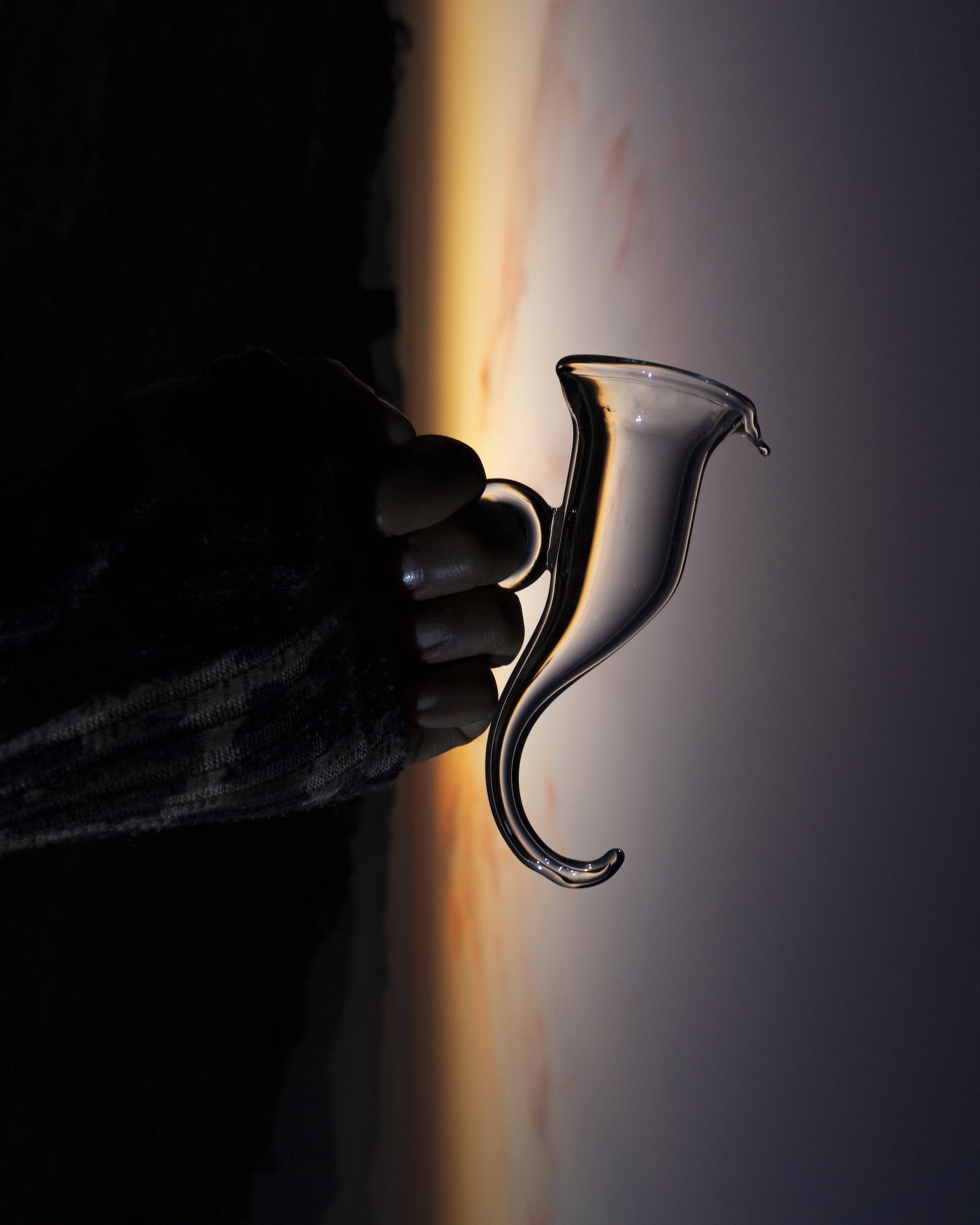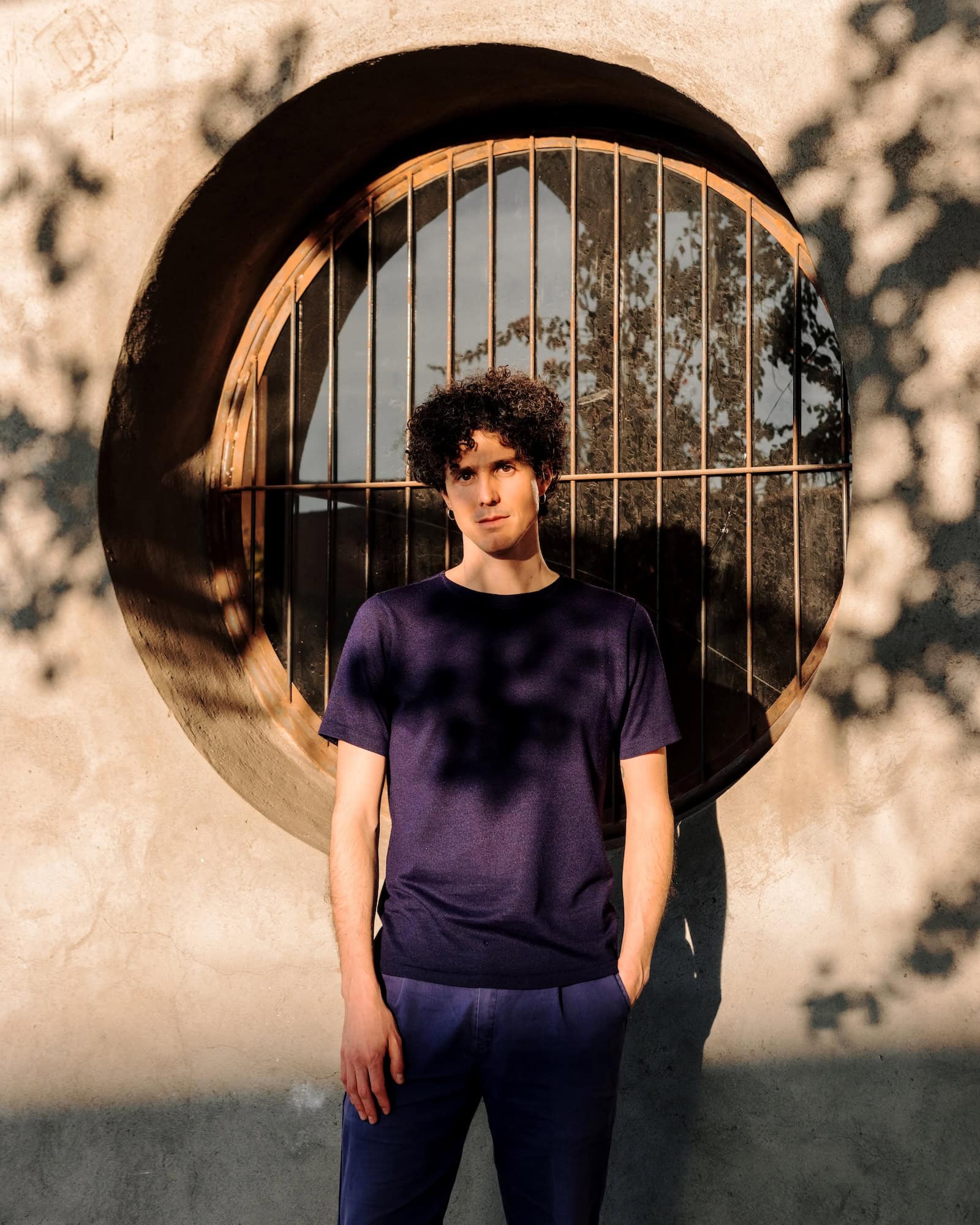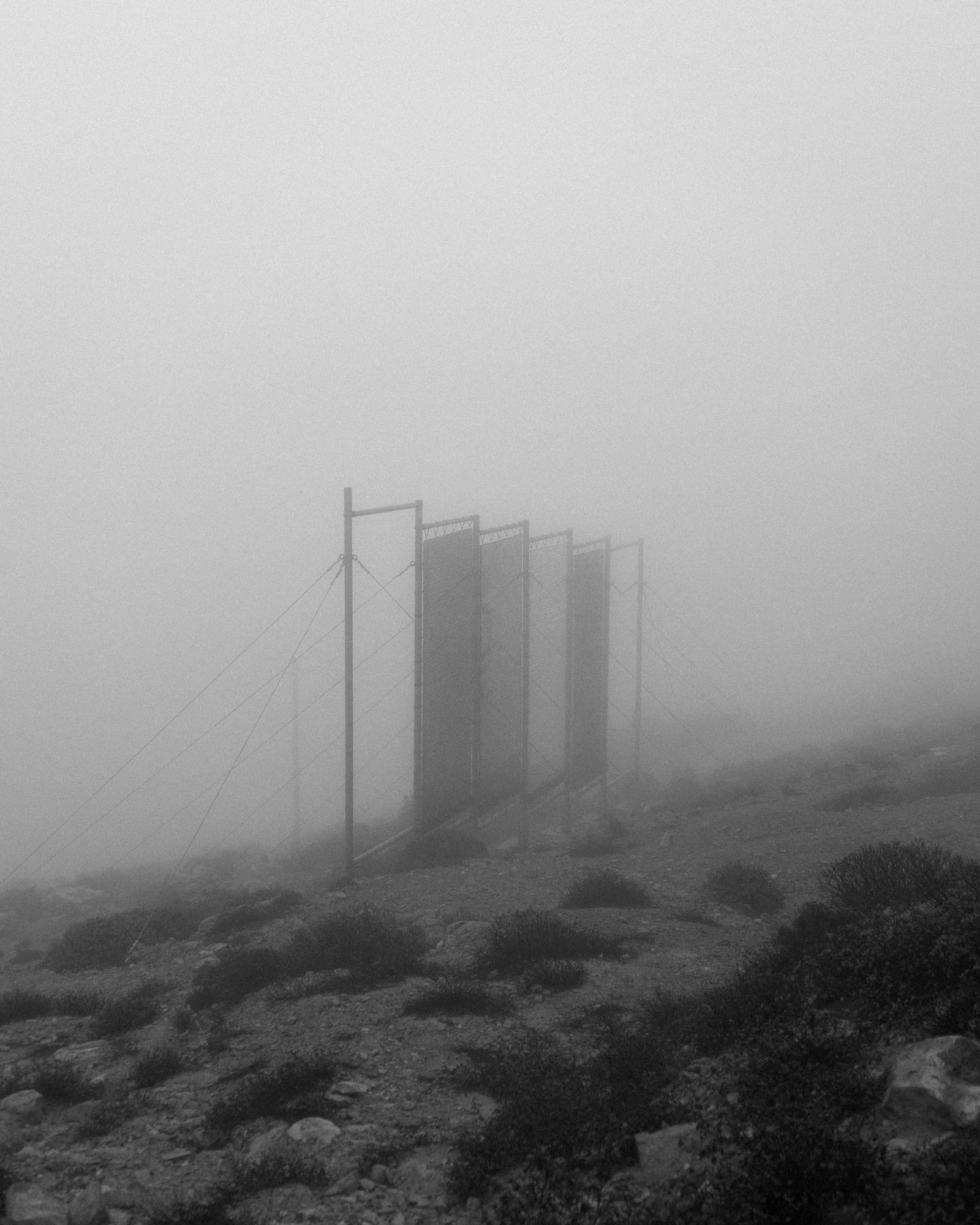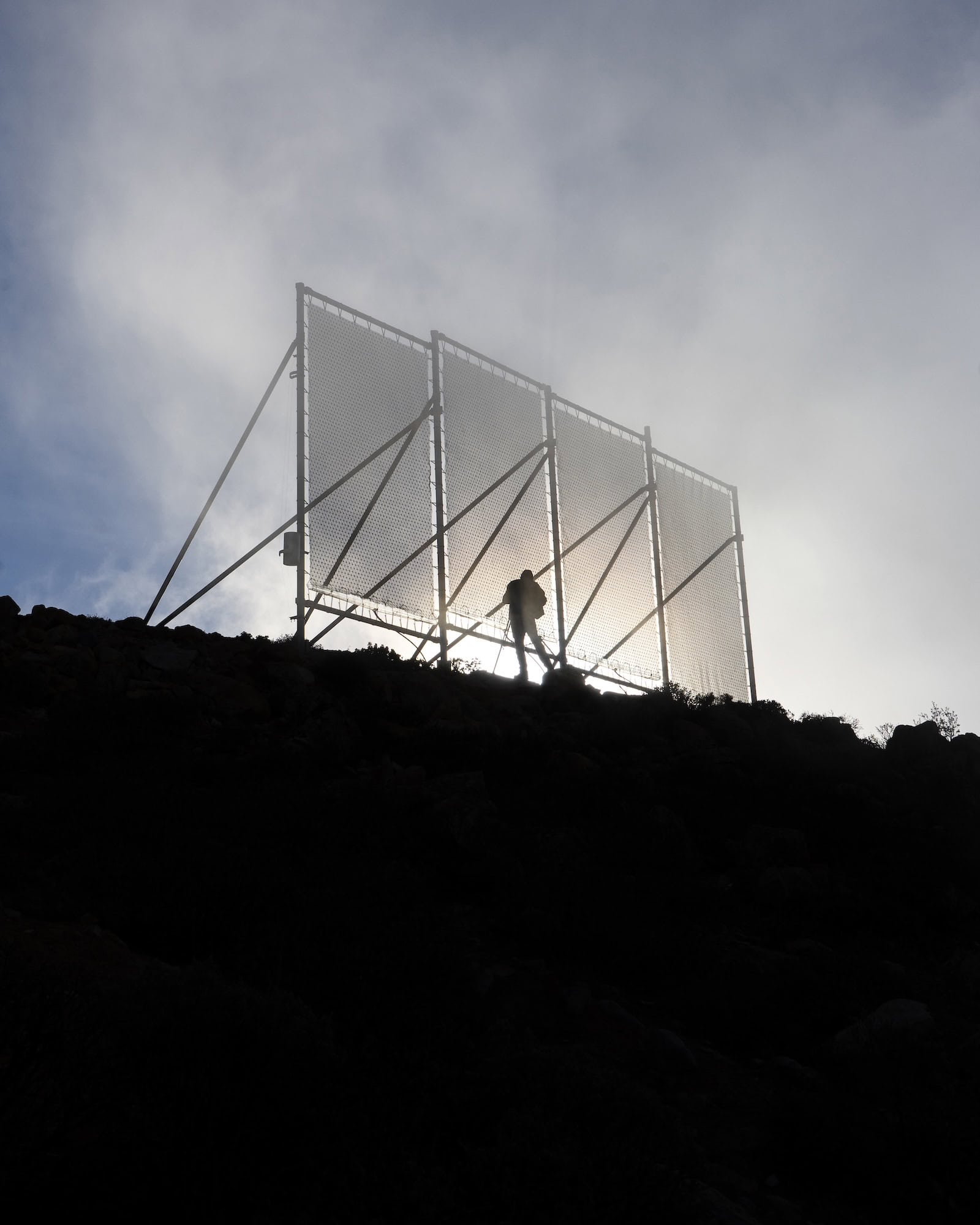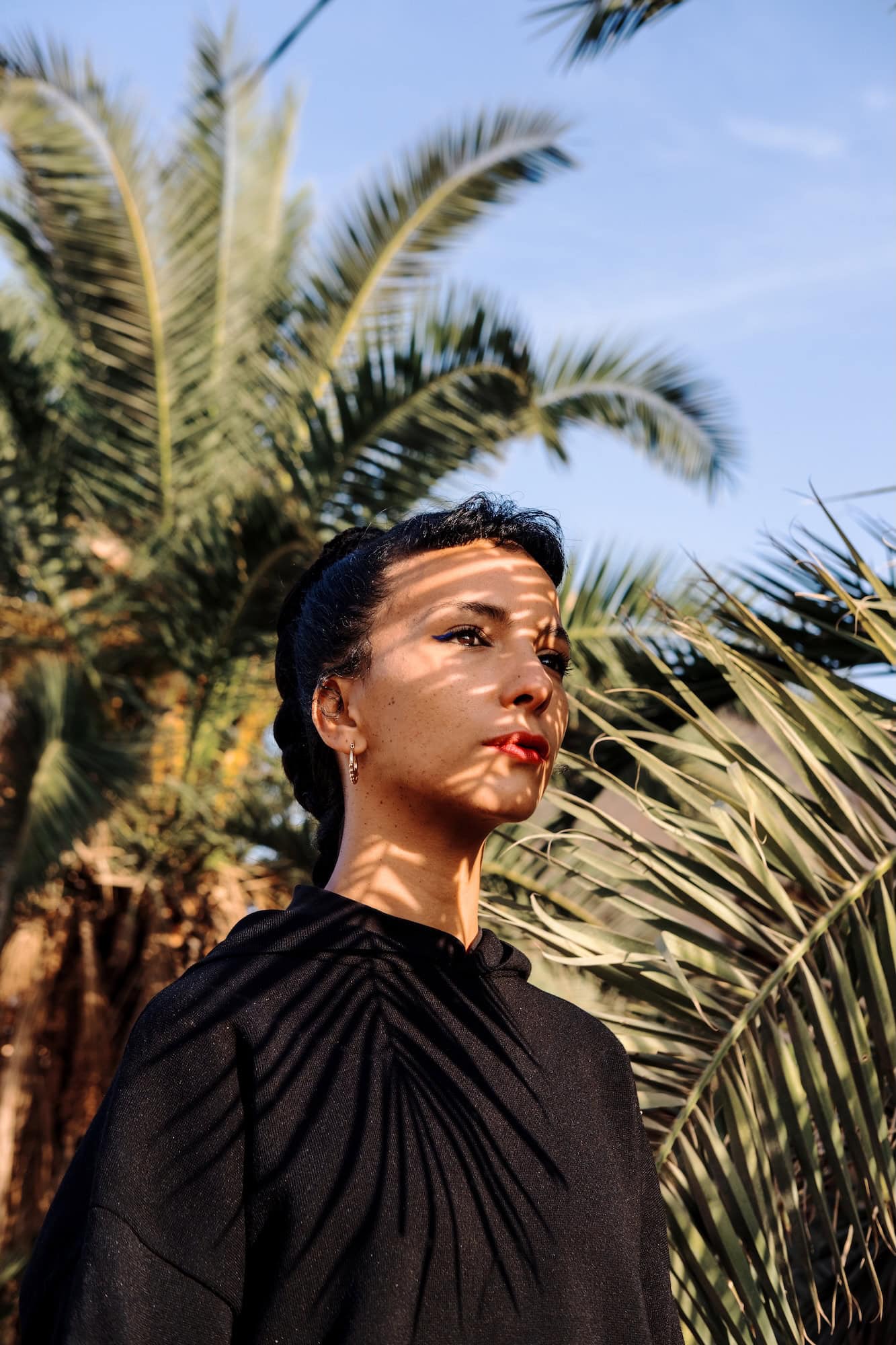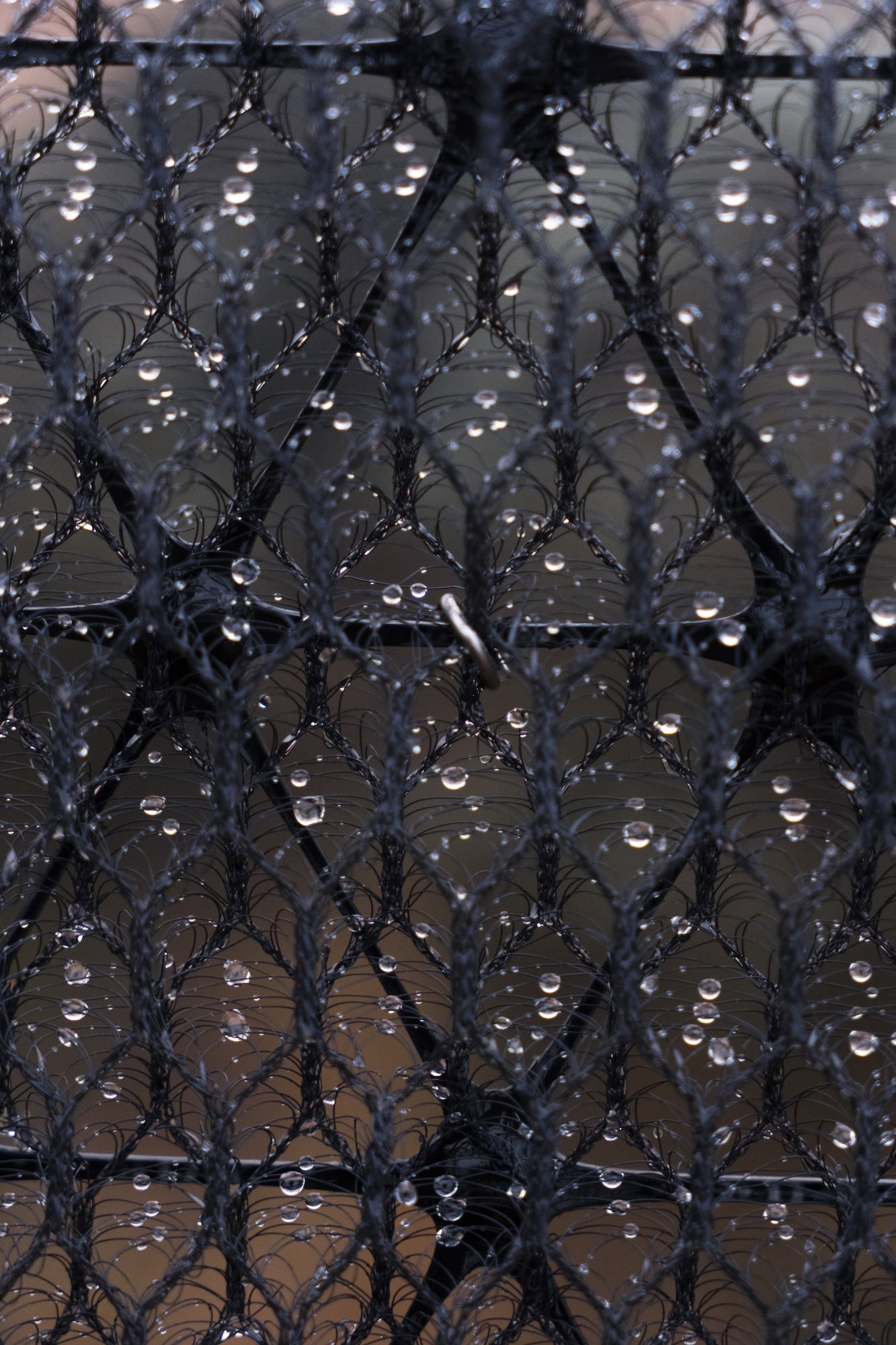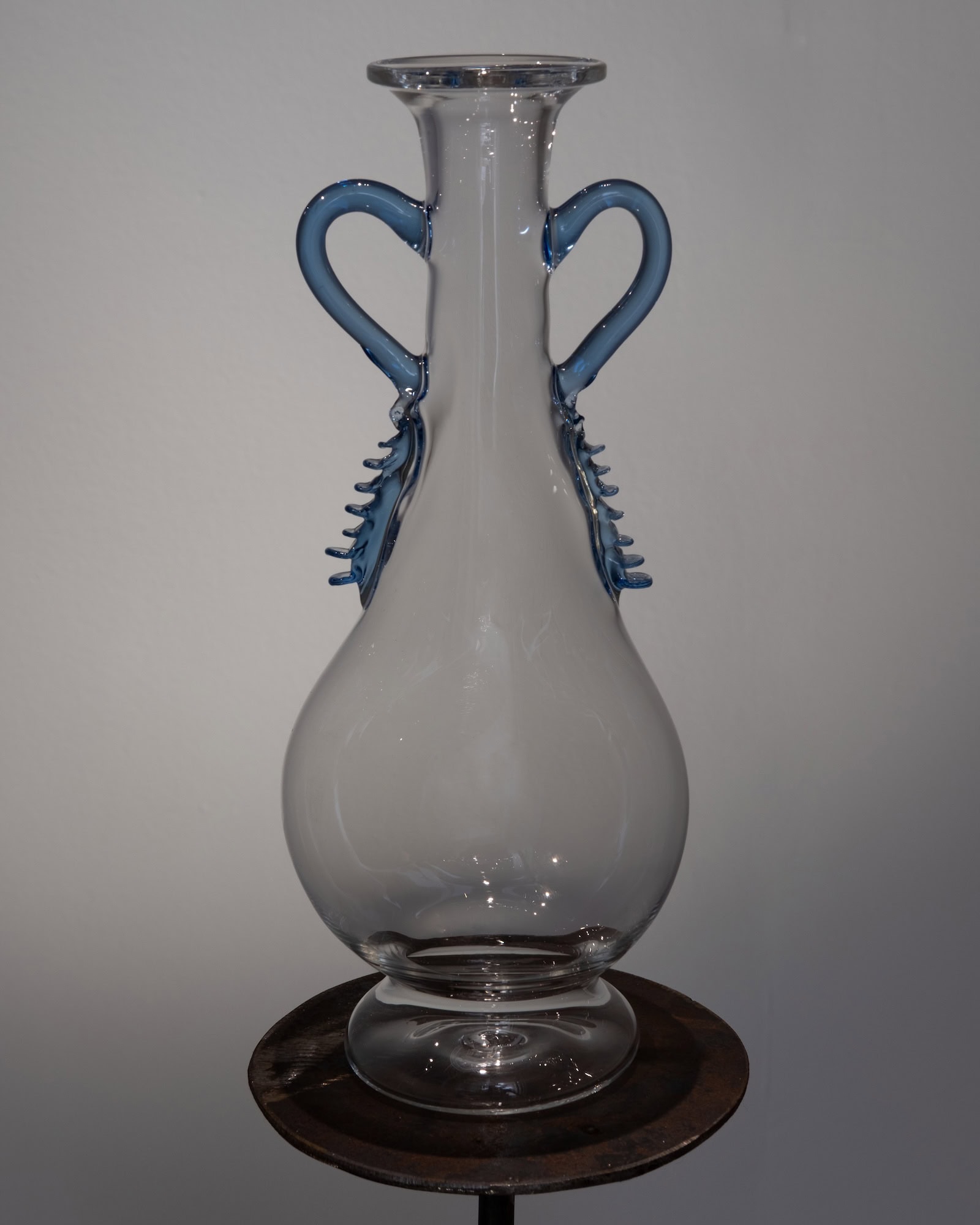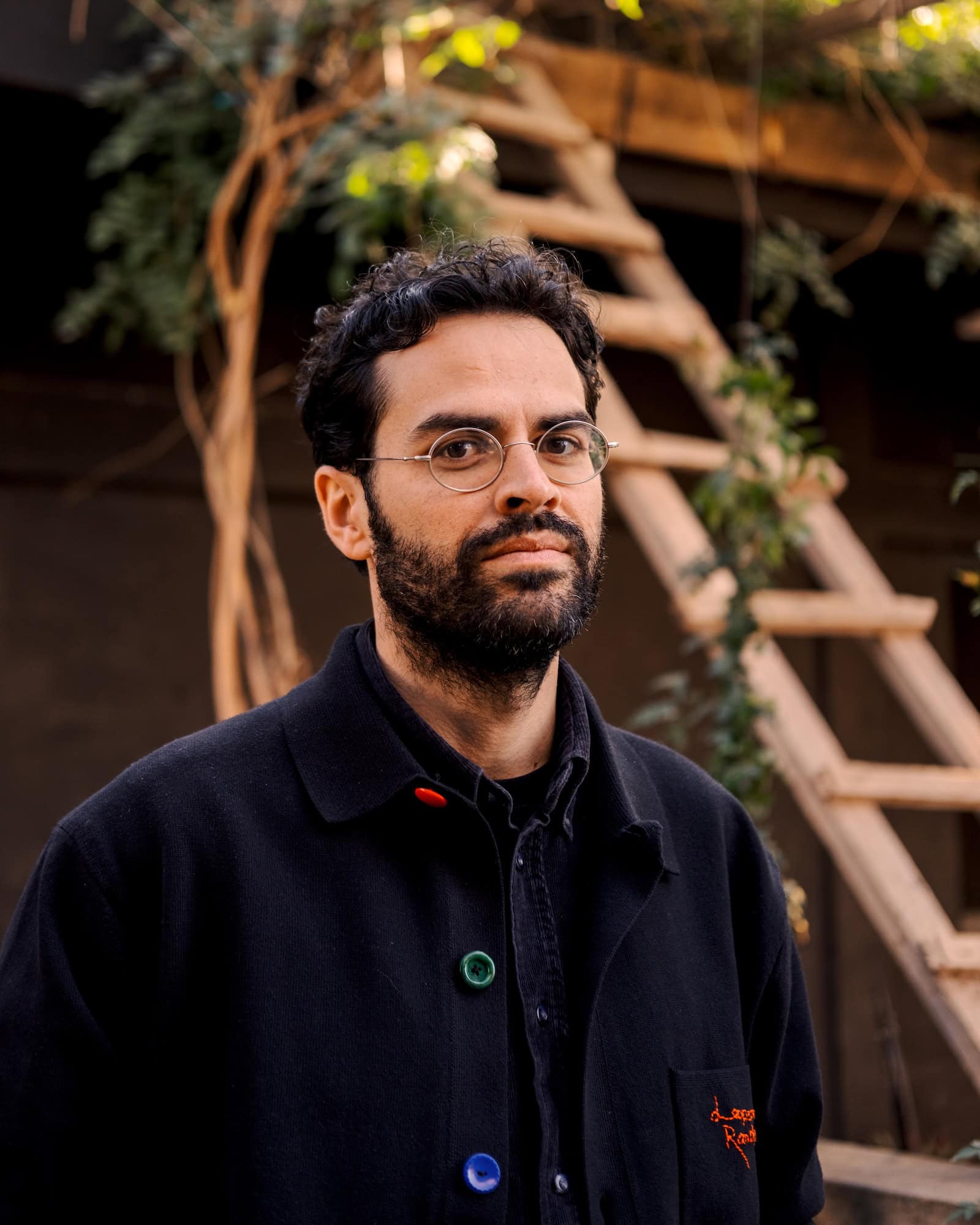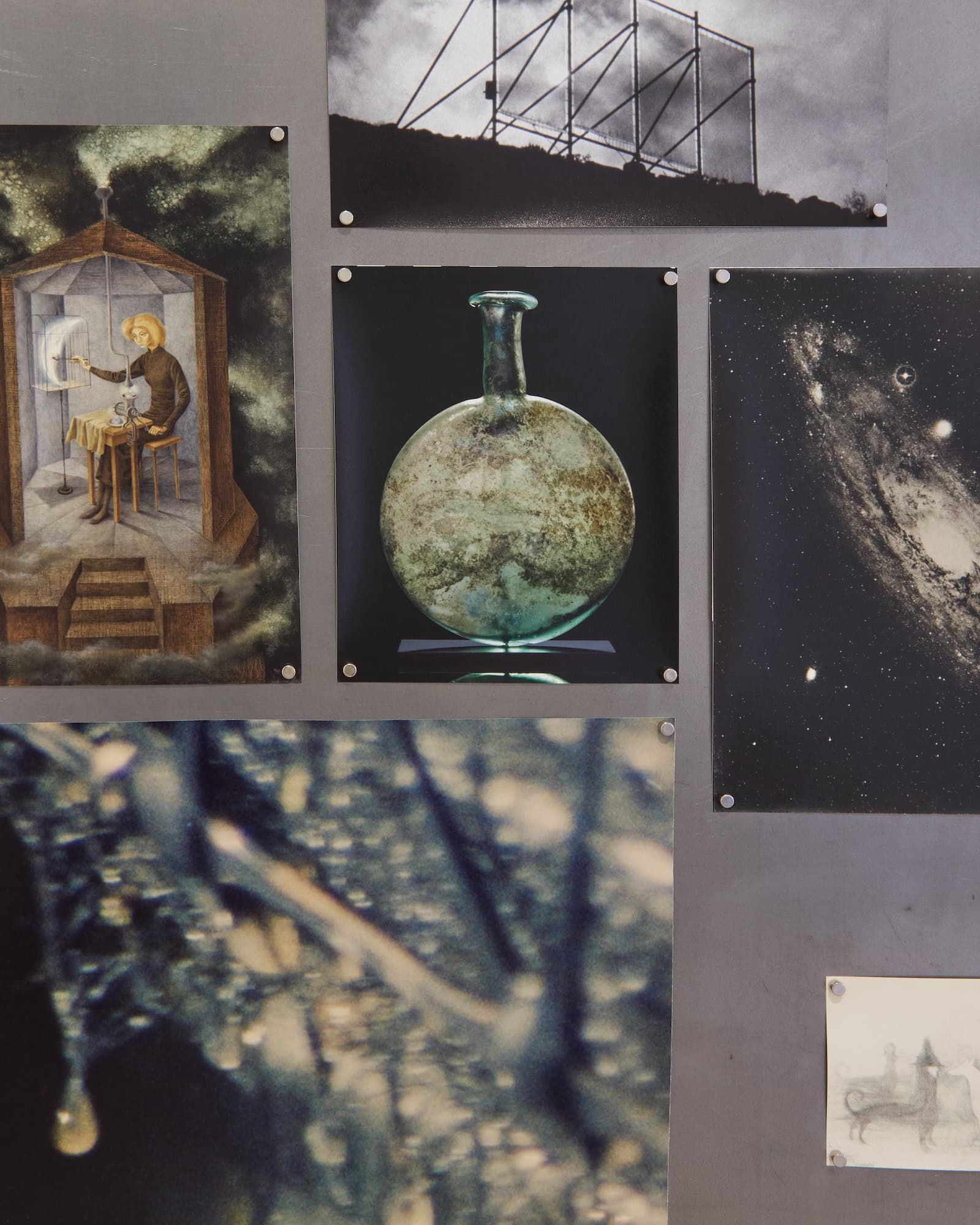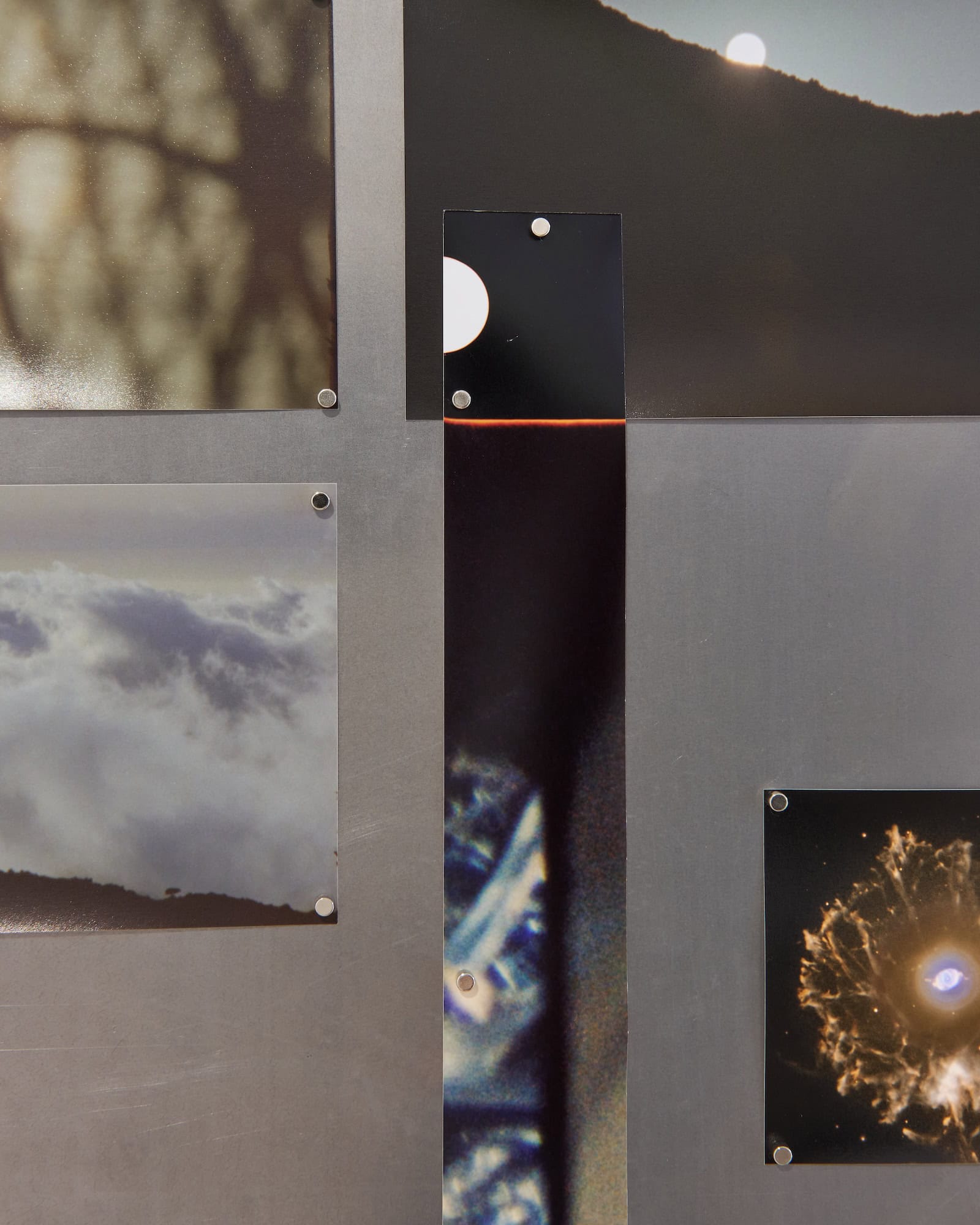Everything starts entering a dream, where filtering architecture protects pearls of lost memory. The above and below, the far and near mark the extension and possibility of this material experience of impermanence. In our conversations, references to a recent meme showing artists facing a split way (political activism, decorative arts?), come to the surface, just to be pushed back again. Is that a useful dichotomy to think with anyway? We might require a new map, and new doors to cross. Confronted with our world, no matter which alternative narrative we build up, bodies disappear not as ghosts in a castle, but more like the sun at the horizon’s edge. Holocaust and genocide won’t bring them back. Mourn early at dawn and pray for the day to come. The image of a dream belongs only to the dreamer, no matter whether it comes from a cosmic force, the magnetic field, or our ‘objective’ world.
What is the space of Tears of Fog in the first place? It is the space for a collective dream, where time-present is suspended, and the visitor is invited to experience a dance, a more-than-human ritual if you like, and the deep-time perspective that Fog performs for us. As Activist Jamila Bargach puts it: “Standing on the top of Boutmezguida, imagine an entire sea of whiteness leisurely, unhurriedly rolling like the waves of the Atlantic sea, rising and then falling, but with no earth foundation to hold it. A slow and gracious movement of soundless waves making their way ahead, invading an empty and clear space, turning it into an expanse of whiteness. The sea is coming to you, you are not walking to it.”
When fog arrives, you need to stand still, fog will do the rest.
The space of Tears of Fog is also a space for collective memory, a reticulation made of doors and key points, a space suspended between religious subjectivation and technical objectification. The sky and the ground are connected thanks to structure-filtering lights, accumulating drops of fragile remembrance. At the core of this project is Artist Nicola Baratto’s intention to extend the reality of the fog experience into a space of collective possibility. Following field research conducted in Sidi Ifni together with Leonardo Ruvolo, Alia Belgsir, and Abdourrahman Benaroub, and hosted by Jamila Bargach and the Dar Si Hmad Foundation, we explored how to transduce our experience in a space of organic and collective knowledge. When Francesca Masoero and Lorén Elhili proposed to transform Nicola’s show into a collective group show inviting artists Raymond Gemayel, Rim Mejdi, Khalid Bouaalam, Yasmine Benabdallah, Fahmy Shahin, & ‘Not to be Published’ zine (aka Heiba & Ammanah Lamara, Arwa Aburawa & Mohamed), we envisioned a way to transgress the dichotomy between political activism and decorative art. The proposal? Standing in solidarity with Palestinian steadfastness through the creation of a space that can allow us to bear witness and at the same time amplify the Owneh Initiative – a cluster of Palestinian civil society organisations aiming to decolonise cultural funding. Owneh will receive a portion of any sales made by the artistic ensemble.
In a world where aesthetics is functionalised to visibility, Tears of Fog elevates fog as a non-human agent able to screen and protect gestures of beauty, rituals for collective healing, and an attempt at magical re-enchantment.
In doing so, the fog crossing the Atlantic shores between the Canary Islands and Sidi Ifni is not alone. The waters and drops of memory nourishing the real, imaginary, and dispossessed landscapes narrated by this artistic ensemble offer yet other gestures of repair, while knitting a web of spatio-temporal entanglements situating some of the structural forces that, indeed, brought us here. From the polluted shores of Asfi, Khalid Bouaalam inhabits the artisanal gesture as one of epistemological and ontological reparation in the making of new cartographies of the self, and of place. Similarly, Yasmine Benabdallah’s travelogue in Tangier witnesses the artist’s journey between loss and repair in an attempt to grapple with and chart the making of the city through its history of colonial past. How does one mend, without erasing, she asks? If in Benabdallah’s work, the sea becomes the force offering an anchor from drowning, in Rim Mejdi’s series Glimpses of what has been, it is the artist’s gesture of gathering fragments of a dying desert ecosystem and writing verses on them that offers a door to salvation if not only a path to bare with alienation, casting a protective spell on a sacred being, the palm tree.
Holy spirits, here the seven saints of Marrakech, drawn over an eerie desert landscape also animate the work of Fahmi Shahin, reconciling a human-non-human connection while honouring a time-space and civilisation, the one once united by the Sahara, before its fragmentation in the times of (neo)colonial border technologies. The violent erasure of spaces of belonging and interconnection lies at the heart of both the ‘Not to be Published’ research group and Raymond Gemayel’s ‘aphasia’. The poetic and traumatic gesture encapsulated by ‘aphasia’ seems to speak for the artist’s dispossession and incapacity but to witness erasure–as water on paper dries out, the contours of a Palestinian land disappear. What remains in Gemayel’s work are watery lands of fugitive dreamscapes.
How did we end up here? Maybe the question today is: is there a way for repair, here and now? Grounded in the material history of Palestinian domination, Not to be Published: A Map of Jerusalem unveils the deep interconnections between cartographic gestures and the colonial apparatus, while also revealing the resistance embodied by the non-human, by an object. Here, the journey of the handmade publication’s subject—a 1941 British military ordnance map of Jerusalem—speaks to the spectre of a justice that exists outside the colonial logic through which we understand this term and its defunct practice. It is a testament to remembrance and resistance in the Palestinian fight for liberation. If Palestine will be free, we will all be free.
Occupying spaces of remembrance, inhabiting fractures, and reenacting rituals of healing and care is what the ensemble of Tears of Fog is offering to us. Under this perspective, the inaugural ritual, conceived by the artists Franca Petroni and Marijn Degenaar aka Circular Ruins, will echo life in the objects and spark a dim light, offering a hazy time-space where gestures are neither technical nor religious, but the fruit of a magnetic energy held in a common ground under the same sky.
Tears of Fog is an exhibition project and a collective solidarity ensemble initiated by Nicola Baratto and produced by LANDESCAPE at LE 18 in Marrakesh. Opening today and on view until April 30th.
